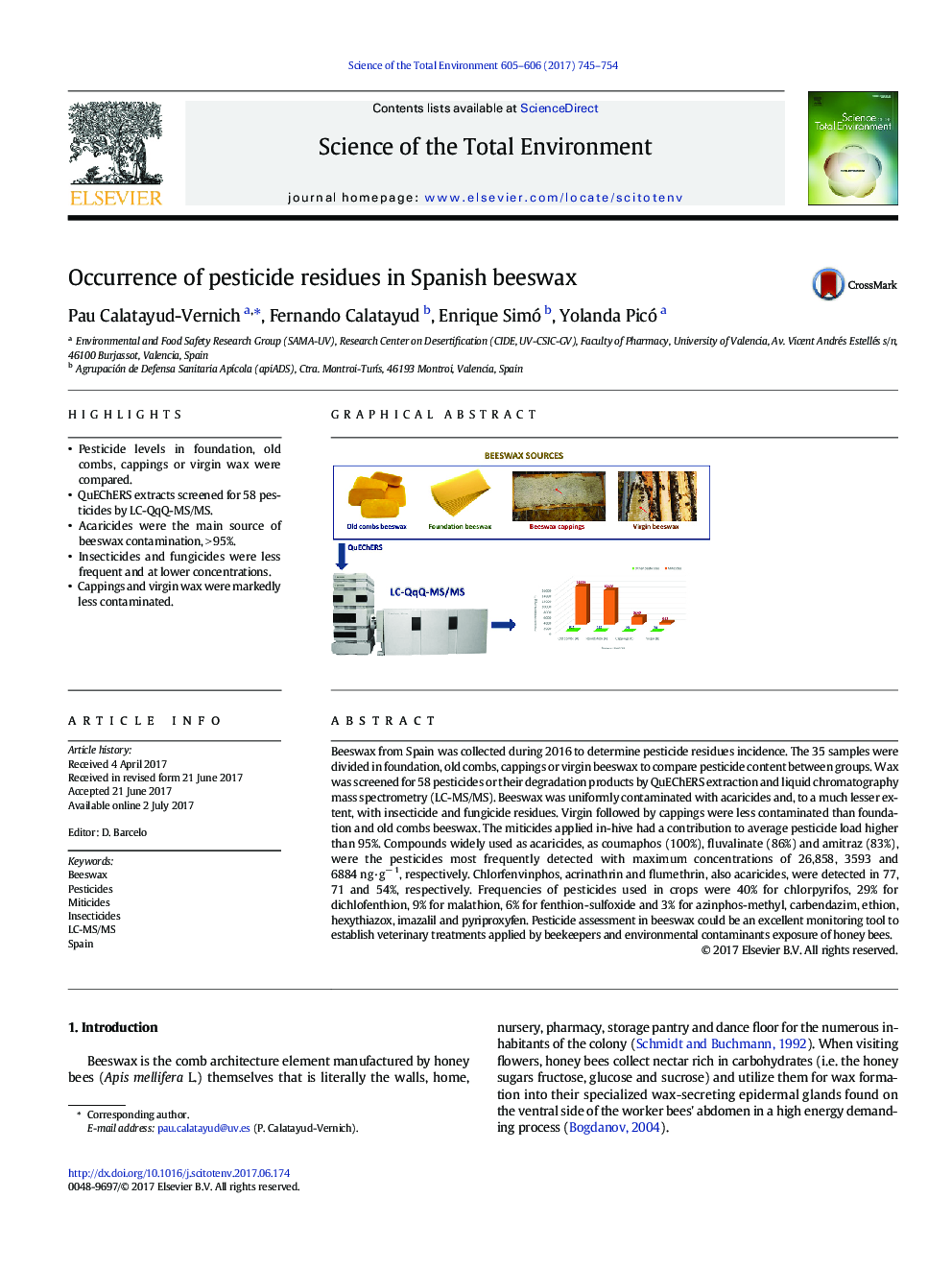| Article ID | Journal | Published Year | Pages | File Type |
|---|---|---|---|---|
| 5750643 | Science of The Total Environment | 2017 | 10 Pages |
â¢Pesticide levels in foundation, old combs, cappings or virgin wax were compared.â¢QuEChERS extracts screened for 58 pesticides by LC-QqQ-MS/MS.â¢Acaricides were the main source of beeswax contamination, > 95%.â¢Insecticides and fungicides were less frequent and at lower concentrations.â¢Cappings and virgin wax were markedly less contaminated.
Beeswax from Spain was collected during 2016 to determine pesticide residues incidence. The 35 samples were divided in foundation, old combs, cappings or virgin beeswax to compare pesticide content between groups. Wax was screened for 58 pesticides or their degradation products by QuEChERS extraction and liquid chromatography mass spectrometry (LC-MS/MS). Beeswax was uniformly contaminated with acaricides and, to a much lesser extent, with insecticide and fungicide residues. Virgin followed by cappings were less contaminated than foundation and old combs beeswax. The miticides applied in-hive had a contribution to average pesticide load higher than 95%. Compounds widely used as acaricides, as coumaphos (100%), fluvalinate (86%) and amitraz (83%), were the pesticides most frequently detected with maximum concentrations of 26,858, 3593 and 6884 ng·gâ 1, respectively. Chlorfenvinphos, acrinathrin and flumethrin, also acaricides, were detected in 77, 71 and 54%, respectively. Frequencies of pesticides used in crops were 40% for chlorpyrifos, 29% for dichlofenthion, 9% for malathion, 6% for fenthion-sulfoxide and 3% for azinphos-methyl, carbendazim, ethion, hexythiazox, imazalil and pyriproxyfen. Pesticide assessment in beeswax could be an excellent monitoring tool to establish veterinary treatments applied by beekeepers and environmental contaminants exposure of honey bees.
Graphical abstractDownload high-res image (279KB)Download full-size image
